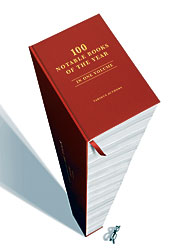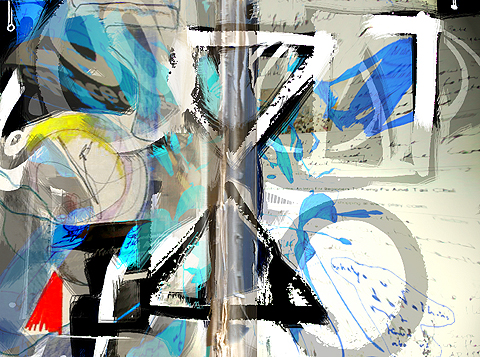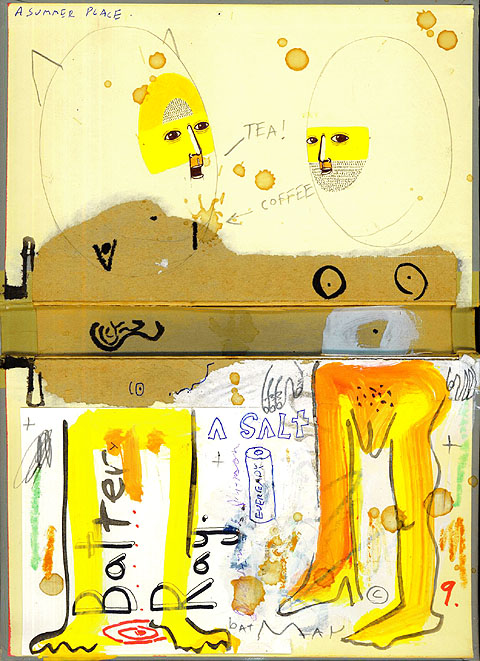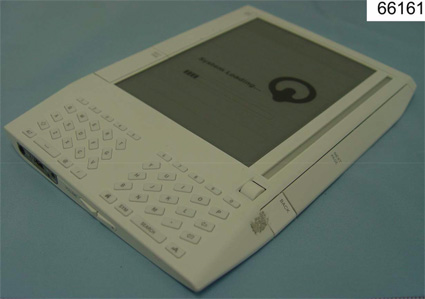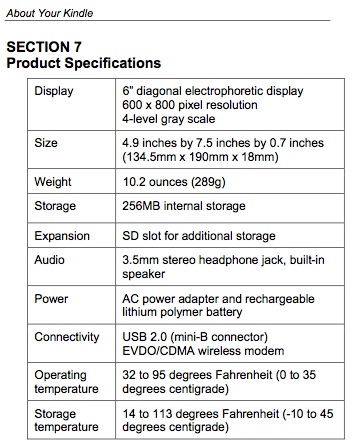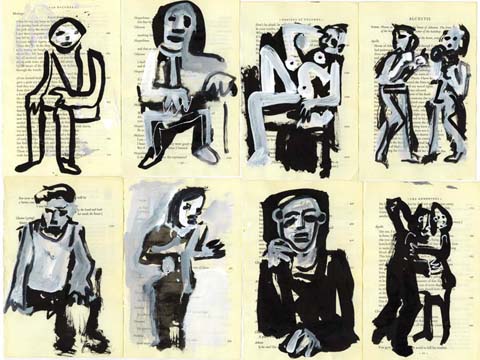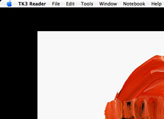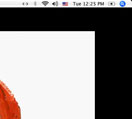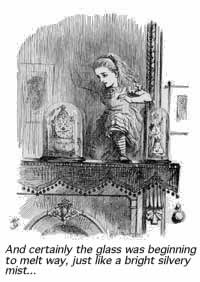 (read parts 1&2)
(read parts 1&2)
[3] I’d just begun hard coding navigational elements for the new ITIN archives, when I suspected Through the Looking-Glass might be an apt, fun read to offset the growing angst around coding. Maybe something in literature would provide the gestalt I felt missing from the minutia of writing lines of functions, booleans, and parameters. Sounds holistic maybe, but this suspicion plus a Wikipedia entry I’d read on Lewis Carol convinced me it’d be the perfect read just now. So, when I was walking through Penn Staten earlier last month, I found a bookseller in the LIRR station and, all excited, I picked up a copy of Alice’s Adventures, with the intentions of breezing through it in order to move onto Looking-Glass. It was nice to open ITIN place the next day to find Stormy Blues For Alice In The Looking Glass. Somehow, the two had already met.
Sally: I’ve been trying to figure out some of the back-end stuff for the past few days, namely, how to get your entire archive to link up to something like this. Do you have any programming / web design wizard friends who might be able to offer me some technical advice?
Alex: God know…. I guess we’ll have to build them manually…some 700 links? yipes.
Alex: I mean, god no….LOL
Sally: Hey, I’m working with a programmer now on a script that will allow the archive to thumbnail images from your entries and automatically load them (& URLs to the corresponding entries) into the Flash file. I don’t know PHP, which is likely the language needed to thumbnail your images automatically, so I’m getting help on that. Once that’s in place, we should be able to (a) play further with layout aspects! and (b) the archive should automatically update every time you publish an entry. Getting closer…
Alex: and it will still do that animated scale up and down trick?
Sally: my PHP programmer who would work on the thumbnail-ing flaked out on me, seems programmers can be as flaky as drummers… So, I set it upon myself to teach myself Flash-based blog applications. At its simplest, it requires a little PHP, a little XML and Flash, all in conversation with what you post online.

Ben: As for PHP gurus… We do in fact have someone working with us right now who’s an experience PHP coder. We’re keeping him pretty busy right now with MediaCommons stuff, but I think he could help you out with this stuff in a few weeks.
Sally: I also imagine there should be more than one way to search / browse the archives. One might be a linear “wall” from month to month that we could click/scroll through, another might be a drop-down menu of months say, to the right of the “wall” of images. Any thoughts on that?
Meanwhile, I’d plotted out on my whiteboard a map of the flash file. It looked to me that there were two methods of approach, interface-wise. Either the zoom function would scale up the size of an entire month’s calendar, and a re-center or panning function would allow the user to focus on a particular entry – or – the zoom function would simply scale up one entry at a time onrollOver (the original idea).
I am (still) drawn to the first idea, even though I’ve put it aside, since that would best recreate the sense of approaching a gallery wall, or landing on the (x,y) of Alex’s blog. But, caveats abound — if an onPress fires the zoom and re-center, then how do you click the entry’s permalink and/or zoom out? Is this overcomplicating things? Here is an example of an unweildy new zoom (an attempt to manage dragging and zooming).
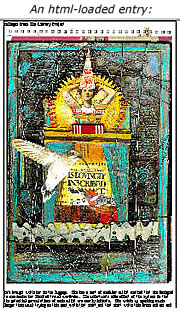 Then I started to think about loading in individual blog entries from the XML. I talked to my friend Mike about this for a while and in exchange for some brownies (although really only out of his extreme kindness and generosity) he constructed an XML format, sample.xml, and guided me on a way to load in the HTML of each individual entry into a small clip.
Then I started to think about loading in individual blog entries from the XML. I talked to my friend Mike about this for a while and in exchange for some brownies (although really only out of his extreme kindness and generosity) he constructed an XML format, sample.xml, and guided me on a way to load in the HTML of each individual entry into a small clip.
The great thing about using the HTML of each entry in the previous example is that it would allow the archives to build completely dynamically. Any changes Alex made in an archived post would reflect in real time in the flash file. Unfortunately, this doesn’t cut down on load time and I can’t coax the videos and animated .gifs to appear (of which there are considerable number). Here is an example of one entry pulled into the Flash file with HTML. CSS can be incorporated, but it’s obviously slow loading.
Mike brought up something I’d wondered too too: are we going to have one XML file for the entire archive? It seems to make more sense for each month to have it’s own.
So, after a few weeks, I caught up with Future of the Book’s expert developer Eddie Tejeda, and we decided to put an XML document within each month. On an exciting note, Eddie devised a great scheme (script) to take screen shots of all of ITIN place’s entries. He’s working on getting the image size down, so as to minimize loading time.
Eddie’s screen shots would load much faster than pure HTML, but it could possibly cut the dynamism. This would build something like this, only faster:
Most of the hard coding of the archive is done. Design matters remain: At the moment, the entries load in rather like a retro computer solitaire game, and drop down menus are disconnected and unskinned. It’s a task to go back and forth between design and developing — I’m just cutting my teeth on some of this and the dryness of programming can dilute creative inspiration (if this is anything to go by). The archive is very close to complete; it will be a thrill to use this gentler beast.

